The Apple iPhone XS Max, a flagship device when it was introduced in 2018, is powered by Apple’s A12 Bionic chipset and features a large OLED-display as well as a dual-camera setup with dedicated tele-lens.
Although slightly larger than its predecessor, the iPhone X, the external design of the iPhone XS Max is otherwise virtually identical. On the audio side of things, the device features dual speakers and microphones. One set of speakers and microphones is embedded in the notch at the top of the display facing outwards; the other set is at the bottom of the device with the perforations facing downwards when the device is held in portrait mode.
Read on to find out how the Apple iPhone XS Max performed in our new DXOMARK Audio test protocol.
Key audio specifications:
- Stereo speakers and recording
- Active noise cancellation with dedicated microphone
- User‑configurable maximum volume limit
About DXOMARK Audio tests: For scoring and analysis in our smartphone audio reviews, DXOMARK engineers perform a variety of objective tests and undertake more than 20 hours of perceptual evaluation under controlled lab conditions. This article highlights the most important results of our testing. Note that we evaluate both Playback and Recording using only the device’s built-in hardware and default apps. (For more details about our Playback protocol, click here; for more details about our Recording protocol, click here.)
Test summary


The Apple iPhone XS Max achieves an overall DXOMARK Audio score of 74 in our tests, making it the number two device in our new ranking, surpassed only by the Huawei Mate 20 X. It’s also in second place for both our Playback and Recording sub-scores.
At 75, the XS Max Playback score is just one point lower than the class-leading Huawei Mate 20 X, thanks to an excellent performance across all test categories. It produced an outstanding score of 84 for artifacts, meaning that sound output is very clean and distortion-free.
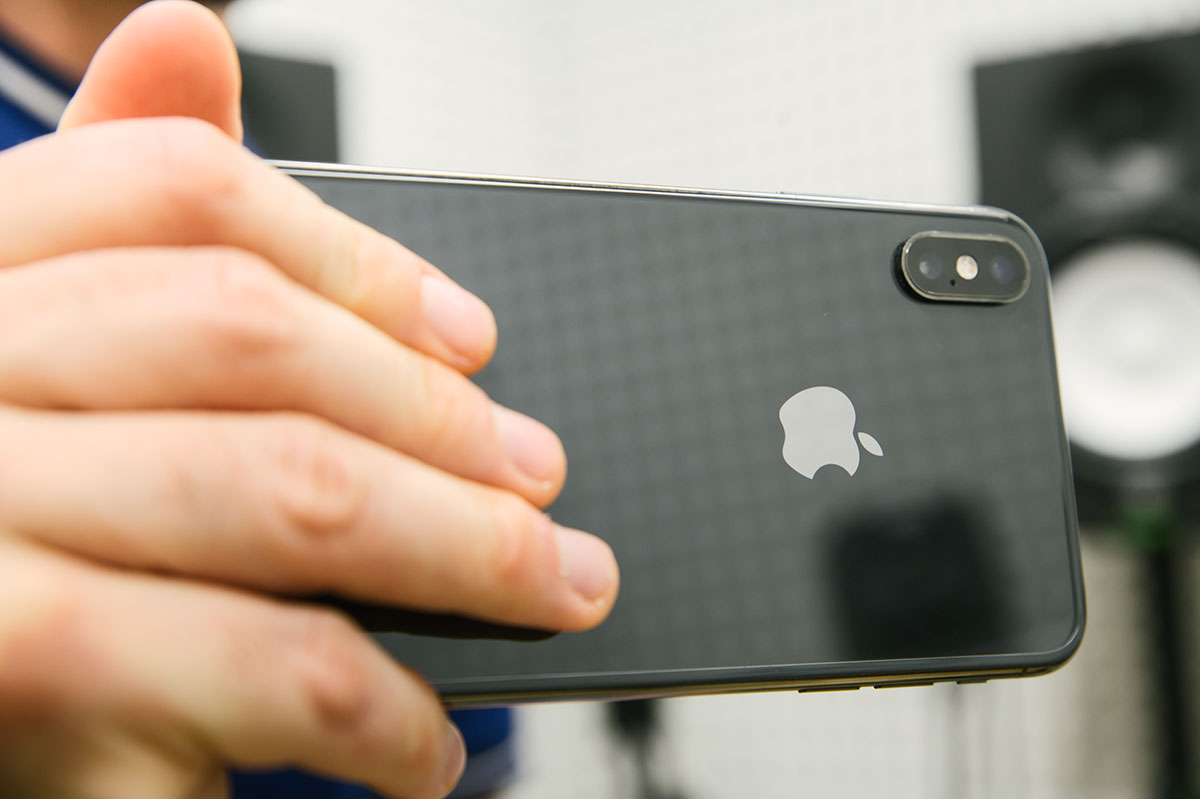
The XS Max also does very well for Timbre and again is beaten only by the Mate 20 X for this attribute. It is the best-scoring device for Spatial, offering very good wideness and localizability; moreover, its Dynamics score is excellent as well, and the second-highest we have seen so far, with the device delivering good performance across a range of modern music genres. It’s also one of the best for playback volume, although other high-end devices also scored well.
The Apple iPhone XS Max performed well for Recording, achieving a score of 69. It is once more among the best for almost all sub-attributes, but lags a little behind for Spatial, where memo wideness and life video directivity leave some room for improvement. On the plus side, at 58, the Apple phone achieved the top score for Background attributes in our recording testing protocol, providing overall good background rendering for a smartphone.
Sub-scores explained
The DXOMARK Audio overall score of 74 for the Apple iPhone XS Max is derived from the Playback and Recording scores and their respective sub-scores. In this section, we’ll take a closer look at these audio quality sub-scores and explain what they mean for the user.
Playback

Timbre
Apple iPhone XS Max
72
89
Frequency is relatively consistent over different amplitudes. However, the amplitude across the midrange frequencies at maximum volume has a tendency to dip (see illustration below).
The DXOMARK audio team tested for timbre across the frequency ranges of bass, midrange, and treble; the XS Max performed outstandingly in both the midrange and treble frequencies without sacrificing a good tonal balance across all frequencies. Different user volume settings did not adversely affect the balance either.
Among the various use cases, the timbre qualities were most apparent during movie playback. Although treble is arguably not the most important frequency range during movie playback (voices are generally in the midrange frequencies), the iPhone performed exceptionally well in that range.
Music played in portrait and landscape mode produced decent results, although landscape playback quality was slightly higher mainly due to the speakers’ position near the top within the notch and at the bottom of the device (left/right or right/left in landscape orientation). Also, when playing music back in portrait orientation, users can inadvertently cover a speaker with their hand by accident (a phenomenon called “occlusion”), which naturally affects the quality of the playback.

Dynamics
Apple iPhone XS Max
72
81
We measured the speaker dynamics using a range of different genres of music and multimedia. The iPhone XS Max handled the different types of music we threw at it with ease and the overall performance was superb. For both drum and bass and rock music, beats were crystal clear at high volumes with minimal distortion—even for bass sounds featuring short decays.
The XS Max delivered our rock soundtrack with a clear strike and power amid a faithful sound reproduction, though it struggled a little with the more delicate sounds of our classical music soundtrack. It fared better with our movie clip because the sound stage was clearly defined within the realms of the display.
Generally speaking, the dynamic performance of the iPhone XS Max is gratifying, producing good playback across the range of modern music genres, whether hip hop, electronic, or pop/rock. The dynamics are also great when watching movies or playing games, even though the bass precision could benefit from some improvement, as it is impacted by inconsistencies.
Overall, only the Huawei Mate 20 X does better than the XS Max for dynamics. No other device—not even the Samsung Galaxy Note 10+ or the iPhone 11 Pro Max—comes close.
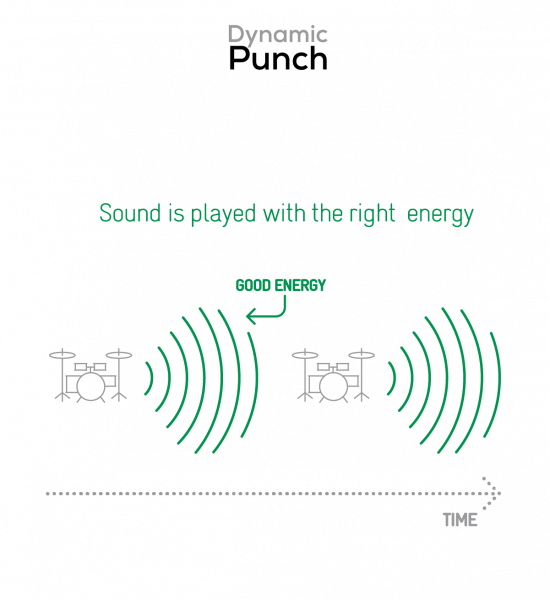

Spatial
Apple iPhone XS Max
75
88
In the testing environment, we placed the device in landscape mode with the display screen facing the engineer. This meant that the left speaker was positioned so that the sound normally travels directly towards the left and radiates outward; the right speaker is embedded in the notch and the sound travels directly towards the engineer and radiates outward.
The iPhone XS Max produced a very good Spatial performance in landscape mode—the best among the seven devices we have tested so far. In common with virtually all smartphones, and because the placement of the speakers, the device performs slightly less well overall in portrait mode (DXOMARK tests for wideness in both orientations).

Volume
Apple iPhone XS Max
76
91
As you can see from the volume graph (below), the steps are perceptibly non-linear in progression up to step 10, after which the volume progression appears to slow slightly, but there is still a perceptible increase in volume up to the maximum 15th volume step.
We carried out objective measurements in our laboratories on recordings of both hip-hop and classical music played at the maximum user volume step.
| Hip-Hop | Classical |
| 77.2 dBA | 74.1 dBA |
According to Apple’s own specification sheets, the smartphone speaker volume in past devices has been quite modest so as to reduce distortions at the maximum volume level. The iPhone XS Max has increased the volume significantly, but without producing too many unwelcome distortions at max volume. It has excellent volume consistency and the volume steps feel well chosen.
Overall, the XS Max Volume score was the second highest in our current rankings, just behind the iPhone 11 Pro Max. However, other high-end devices such as the Samsung Galaxy S10+ and the Samsung Galaxy Note 10+ also scored well.

Artifacts
Apple iPhone XS Max
84
113
We used our sound files to test for overall degradation of the sound quality at different volume steps, and we noted that some clipping occurred at higher volumes with rock and dance tracks. The Apple device reproduced our other music and our movie audio with almost no clipping at these higher volumes.
There was no discernible distortion from pausing or playing tracks, nor as a result of any other user action. However, distortions such as pumping effects were more evident when played at higher volumes of ten or over. In this respect, Apple is a victim of its success—in the past, less capable speakers would have been more forgiving.
The iPhone XS Max scored well over the full range of artifact sub-attributes we tested. However, spectral artifacts were most evident and scored slightly worse than noise, temporal, and user artifacts. Spectral artifacts were worse at maximum volume.
Overall, the performance was good, even though we perceived some unwanted noises in low-frequency sounds. In short, the XS Max achieved one of the best scores for Artifacts, but all devices tested so far produced very similar results.
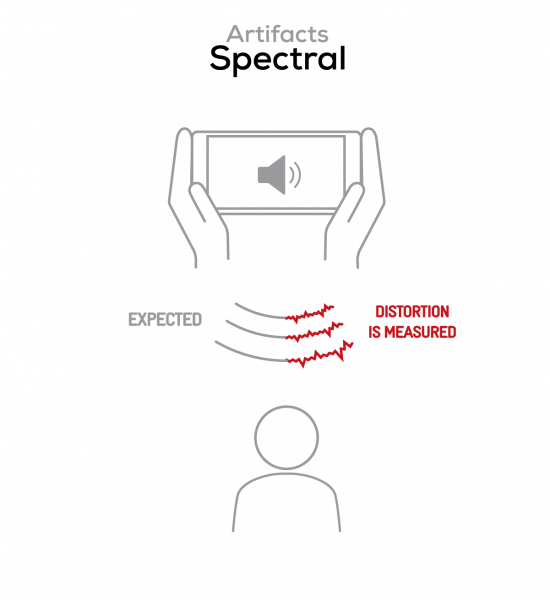
Recording

Timbre
Apple iPhone XS Max
80
91
The XS Max’s reproduction of the timbre of an original source was excellent across the board. Bass, midrange, and treble were impressive, as was the overall tonal balance among these frequencies (see graph below).
When we tested the various use cases, the results were also consistent. Whether for a rock concert or a memo voice recording, the iPhone XS Max performs similarly and admirably, and our objective tests confirm the results of our perceptual tests. The iPhone faithfully rendered both voices and background noises; however, treble sounds were sometimes lacking during our memo recording use case.
The iPhone XS Max was not the top device in our current rankings, but comes in second, just behind the Samsung Galaxy S10+, and outperforms a range of other high-end phones.

Dynamics
Apple iPhone XS Max
63
81
iPhone users will be reassured that the results of our Dynamics test under our recording test protocol were generally good. Our testers look at two sub-attributes, the envelope and the signal-to-noise ratio. The XS Max produced results that are very close to the original sounds in the different use case scenarios. However, when using the memo app, the results are slightly less impressive. (Our engineers believe that the memo app could be improved with enhancements to the recording algorithm, which could also improve voice intelligibility.)

Spatial
Apple iPhone XS Max
53
78
Although the overall score for Spatial attributes was low, the device did perform well for certain sub-attributes—localizability and distance. Its performance for directivity and wideness was a little worse. That said, the XS Max is more or less in line with the competition in this respect.
The iPhone XS Max is adept at capturing live performances, whether a play, a speech, or a concert. Voices remain clear even from long distances. Although the music it captures is not terribly stereophonic, it does convey some notion of three dimensions, whereas a single microphone would capture none.
However, as with most of the devices we have tested so far, the iPhone’s memo wideness and life video directivity definitely have room for improvement. (Only the Huawei Mate 20 X is noticeably ahead of the rest.)
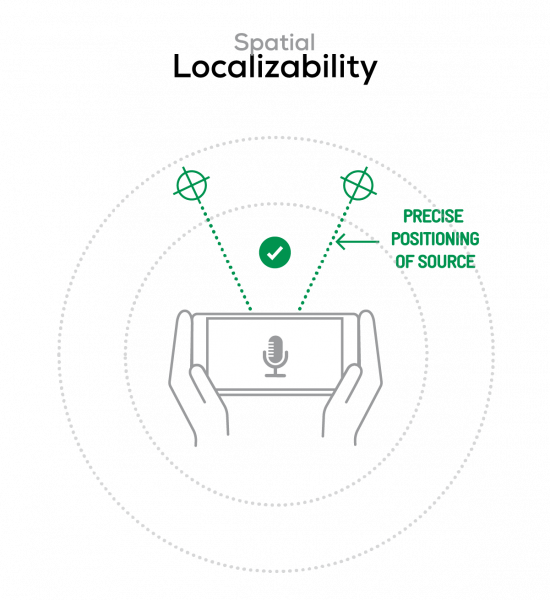
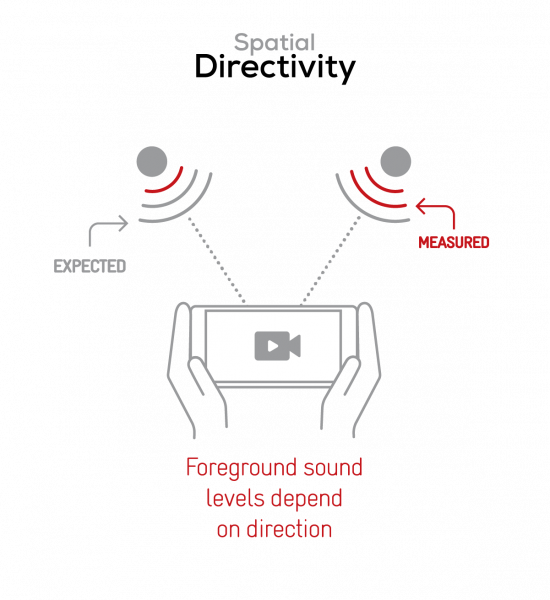

Volume
Apple iPhone XS Max
76
99
We test for both the nominal volume and the maximum level. The iPhone reproduces the overall loudness decently—far better than most other devices tested so far and on the same level as the iPhone 11 Pro Max. While the iPhone performed well for volume in all tested use cases, our engineers think that the overall volume could do with a bit of a boost and that doing so would not produce any significant detrimental effects.
The device proved best at capturing voices in a meeting environment and during the recording of a life video (for example, a typical family moment, such as a birthday celebration or other similar candid moment captured for posterity).
Here are our test results, measured in LUFS (loudness unit full scale); note that results lower than –24 are unacceptable.
| Meeting | Life Video | Selfie Video | Memo |
| -24.7 LUFS | -18 LUFS | -16 LUFS | -20.6 LUFS |

Artifacts
Apple iPhone XS Max
67
97
The overall result for Artifacts when recording on the iPhone XS Max is decent. But looking more closely at the sub-attributes, we found that while there were very few artifacts due to occlusion, there were many more temporal artifacts, and this finding was consistent over all tested use cases. You can hear some of the artifacts for yourself in this sample recording:
It was interesting to note that many fewer artifacts were evident under nominal volume recording conditions; rather, most occurred in loud environments. In particular, when we tested the use case of an electronic concert and similarly loud conditions, the volume decreased after a few seconds.

Background
Apple iPhone XS Max
58
60
Tonal balance in background recordings were quite impressive. The testers also evaluated the directivity, and as one would expect for a smartphone, the score was low. But overall, the iPhone rendered the background well, with negligible artifacts in evidence. However, our testers did notice that iPhone modified the background noise in the recording a bit, which conveyed a slightly unnatural sound for the final result. Still, the XS Max achieved the highest score for background so far, outperforming even newer high-end devices such as the iPhone 11 Pro Max and the Samsung Galaxy Note 10+.
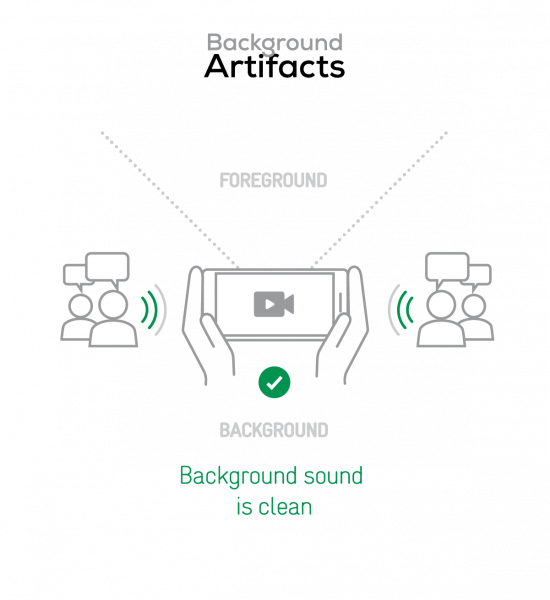
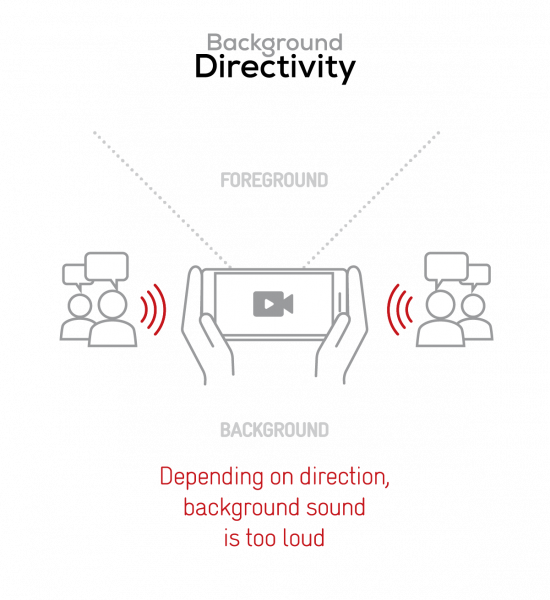
Conclusion
Overall, it’s a little surprising to see the older iPhone XS Max beat more recent flagship devices such as the Samsung Galaxy Note 10+ and Apple’s own iPhone 11 Pro Max, and that it is surpassed only by the Huawei Mate 20 X. Despite the need for improvement to memo and voice recording, the XS Max’s good spatial results and its impressive results for handling higher volumes with relatively little distortion make it clear that Apple has ensured that the iPhone XS Max will maintain a leading position in audio playback and recording for some time to come.
Playback
Pros
- Good overall playback performance
- Excellent for timbre, volume, and spatial
Cons
- Attack and bass scores are low in comparison to more recent devices
Recording
Pros
- Flat frequency response, good timbre rendering, and good average loudness
- Good dynamics with a decent signal-to-noise ratio and good shape to envelope
- Good overall spatial performance
- Recorded audio sounds natural with few disturbances
Cons
- Lack of treble
- Localizability needs some improvement
- Quality of memo recording could be improved


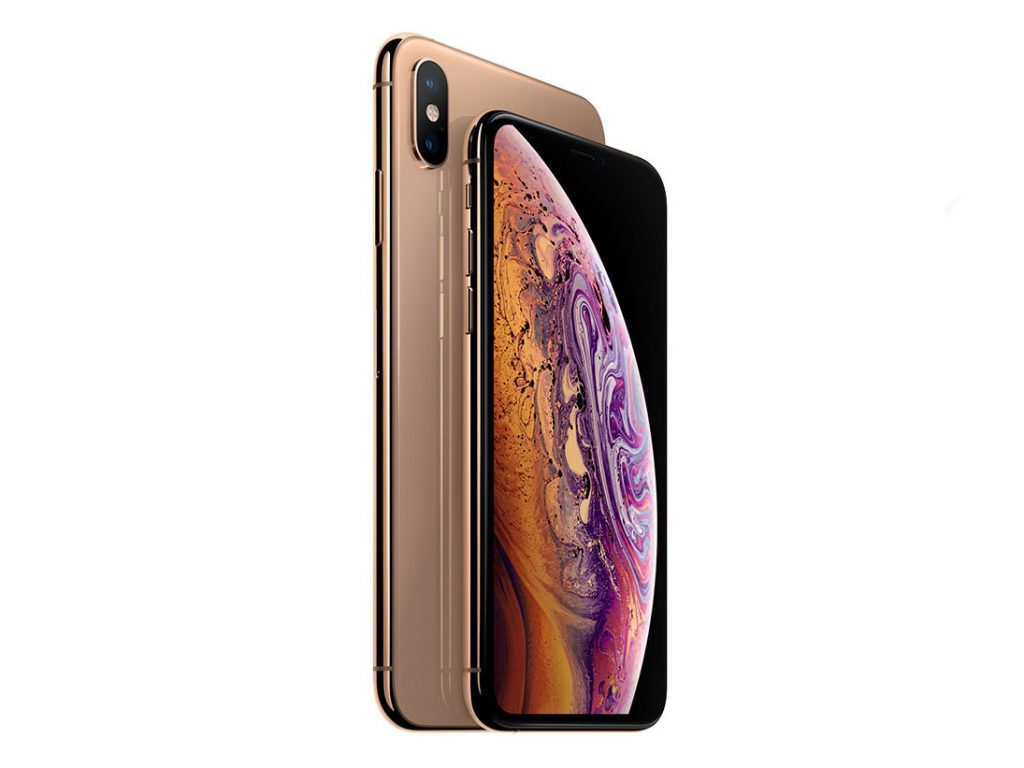
DXOMARK encourages its readers to share comments on the articles. To read or post comments, Disqus cookies are required. Change your Cookies Preferences and read more about our Comment Policy.